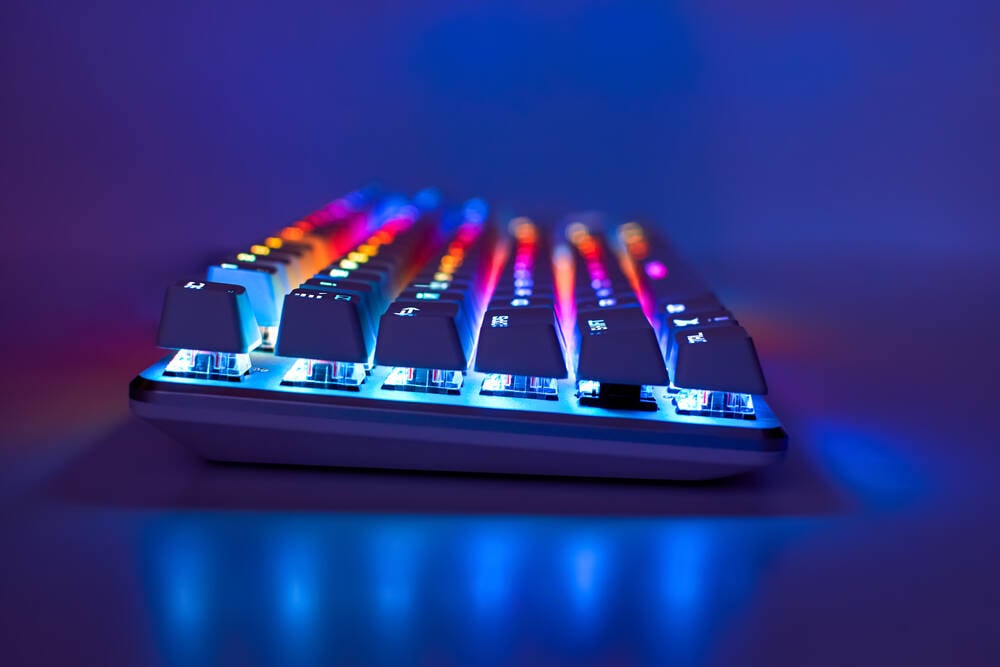Researchers in the UK claim to have translated the sound of laptop keystrokes into their corresponding letters with 95 percent accuracy in some cases.
That 95 percent figure was achieved with nothing but a nearby iPhone. Remote methods are just as dangerous: over Zoom, the accuracy of recorded keystrokes only dropped to 93 percent, while Skype calls were still 91.7 percent accurate.
In other words, this is a side channel attack with considerable accuracy, minimal technical requirements, and a ubiquitous data exfiltration point: Microphones, which are everywhere from our laptops, to our wrists, to the very rooms we work in.



Someone explain how this works? Doesn’t make much sense to me how that’s even possible.
Because of different placement on the keyboard and different finger pressure, each key press has a slightly different sound.
The telling thing in this story is this
For some people (those with a very consistent typing style on a known keyboard) they were right 95% of the time.
In the real world this type of thing is basically useless as you would need a decent sample of the person typing on a known keyboard for it to work.
So to do this you need to have physical access to the person (to place a microphone nearby) and know what type of device they are typing on and for it to be a device that you have already analysed the sound profile of.
You don’t need physical access, just some malware that has access to the microphone
We would hope researchers “discovering” this wouldn’t have a production ready product as their proof of concept. So there is room from improvement but military contractors would love to invest in this
Which you still need to have previously installed…
If the person has allowed malware to be installed just install a keylogger (which gives you 100% accuracy every time) rather than jump through more hoops with this.
The article says
Hm. Sounds like “some cases” are hunt and peck typists or very slow touch typists.
I don’t know if training for each victim’s typing is really needed. I get the impression they were identifying unique sounds and converting that to the correct letters. I only skimmed and I didn’t quite understand the description of the mechanisms. Something about deep learning and convolution or…? I think they also said they didn’t use a language model so I could be wrong.
The problems is that even with up to 95% accuracy that still means the with a password length of 10 there is a 50/50 chance that one character is wrong.
A password with one character wrong is just as useless as randomly typing.
Which character is wrong and what should it be? You only have 2 or 3 more guess till most systems will lock the account.
This is an interesting academic exercise but there are much better and easier ways to gain access to passwords and systems.
The world is not a bond movie.
Deploying social engineering is much easier than this sort of attack.
They’ll have modelled the acoustic signals to differentiate between different keys. Individual acoustic waves eminating from pressing a key will have features extracted from them to identify them. Opimal featues are then choose to maximise accuracy, such as features that still work when the signal is captured at different distances or angles. With all these types of singsl processing inference models, you never get 100 percent. The claim of 95 percent is actually very high.
This is just me kindof guessing off the top of my head, but:
Now, the researchers didn’t sit down and list out all of these (or any other) ways in which software could determine what was typed from audio and compose an algorithm that accounted for all/most/some of these. They just kindof threw a bunch of audio with accompanying “right answers” at a machine learning algorithm and let the algorithm figure out whatever clues it could discern and combine those in whatever way it found most beneficial to come up with an (increasingly-more-accurate-with-every-training-set) answer. It’s likely the algorithm came up with different things than I did that helped it determine which key(s) were being pressed.
Every key is unique and at a different distance to the microphone and therefore makes tiny differences in noise.
Knowing this, and knowing the frequency distribution of letters in language (e.g. we know “e” is the most common letter) and some clever analysis over a large enough sample of typing, we can figure out what each key sounds like with a statically high level of probability. Once that’s happened it’s just like any other speech recognition software, except it’s the language of your keyboard.